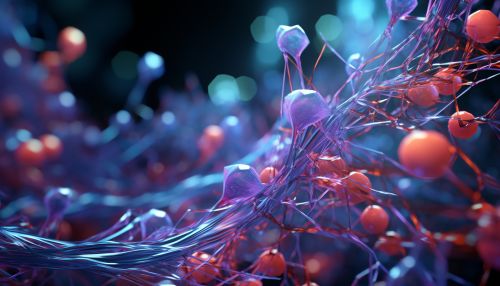Neuraminidase
Overview
Neuraminidase is an important enzyme found on the surface of influenza viruses that enables the virus to be released from the host cell. Neuraminidases are also found in other organisms, including bacteria, where they play a role in the degradation of sialic acids and the movement of cells through the extracellular matrix.


Structure
Neuraminidase is a type of glycoside hydrolase enzyme which cleaves the glycosidic linkages of neuraminic acids. The enzyme's structure is quite complex, consisting of four identical subunits arranged in a square planar configuration. Each subunit is made up of six antiparallel beta sheets surrounded by alpha helices. The active site of the enzyme is found in a depression in the center of the molecule.
Function
The primary role of neuraminidase in influenza viruses is to facilitate the release of newly formed virus particles from infected cells. This is achieved by cleaving the sialic acid residues on the surface of the host cell, thereby freeing the virus to infect other cells. In addition to this, neuraminidase is thought to aid in the entry of the virus into the cell by breaking down the mucus in the respiratory tract, allowing the virus to reach the underlying cells.
Neuraminidase Inhibitors
Neuraminidase inhibitors are a class of antiviral drugs that block the function of neuraminidase, thereby preventing the virus from being released from the host cell. These drugs are commonly used in the treatment and prevention of influenza. Examples of neuraminidase inhibitors include oseltamivir (Tamiflu) and zanamivir (Relenza).
Bacterial Neuraminidase
In bacteria, neuraminidase is involved in the degradation of sialic acids, which are found in high concentrations in the mucus lining of the respiratory and gastrointestinal tracts. By breaking down these sugars, bacteria are able to move more freely through the mucus and colonize the underlying tissues.
Clinical Significance
Due to its crucial role in the life cycle of influenza viruses, neuraminidase is a key target for antiviral drug development. The emergence of drug-resistant strains of influenza has led to an increased focus on the development of new neuraminidase inhibitors. In addition, the presence of neuraminidase in certain types of bacteria has been linked to their virulence, making this enzyme a potential target for antibacterial drugs as well.
